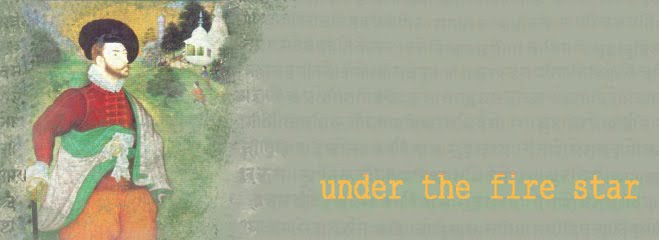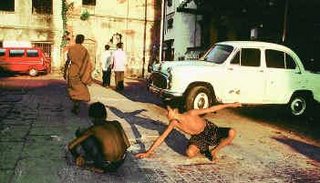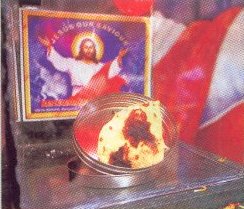I watched
Lal Patthar – an old Hindi movie (1971) starring Raj Kumar and Hema Malini. He’s a Raja, she’s one of the two Ranis, and is out for revenge. They have a scene together in a room with a stuffed tiger in the middle of it. She’s reclining on a sofa to the right, he approaches from the left, the tiger is between them, its mouth open in a snarl. He rests his arm on the tiger’s back and says something nasty to her. She rises and comes toward him, he moves away, she puts
her hand on the tiger’s back. Says something even nastier. He comes back and rests his forearm on the tiger, like an armrest. Both of them are touching the tiger. Close-up of the tiger’s snarl….
There is a lot in Hindi film which reminds me of silent films, or village theatre – the director wants to make really really sure that the audience understands what is going on. There are many significant nods, the villains all but twirl their moustaches…
Clichés in Hindi Movies
I hate you!
I love you.
This marriage cannot take place!
When you were born I promised my best friend that you would marry his son when you grew up.
The daughter of a man in my position can never marry a poor boy!
Our family is poor but honest, you can never marry that corrupt rich man’s son!
Our families have been feuding for generations, forget about marrying him!
I’m pregnant.
You’re like a son to me. (He is her son, separated at birth)
When I’m with you, I feel as though you were my mother. (see above)
Son, you have an identical twin brother who was separated from you at birth.
Brother!
Ma!
Son!
Doctor, my brother / beloved / mother will live, won’t s/he?
I’ve done all I can, now you must put your faith in God.
Ma! You can’t leave me here alone!
You dog!
You villain!
Rascal!
Your death is standing behind your shoulder!
I’ll break your body in such small pieces, there won’t be enough for the vultures to eat!
The God of Death won’t even recognise you!
Get the funeral pyre ready now!











